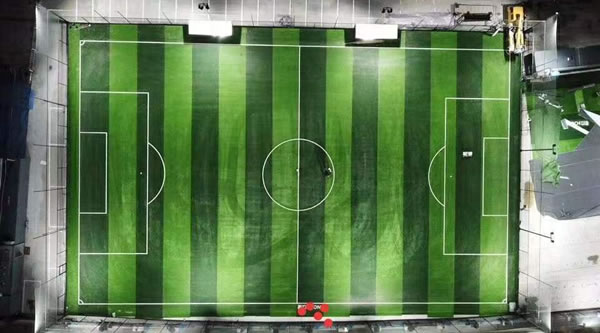UNIGRASS Provides Professional Artificial Turf Installation
UNIGRASS provides customers with a comprehensive artificial turf solution, covering installation services for multiple sports venues and landscape turf. We specialize in turf laying for various sports venues such as football, golf, tennis, rugby and padel, ensuring that each project meets international standards and provides excellent sports performance and comfort. In addition, UNIGRASS also provides professional landscape grass installation services to create a natural and green environment for outdoor spaces such as gardens, balconies, public parks, etc. Whether it is a sports venue or landscape design, we are committed to creating long-lasting, beautiful, low-maintenance turf solutions for customers through high-quality turf materials and superb construction technology, enhancing the overall experience and functionality of the space.
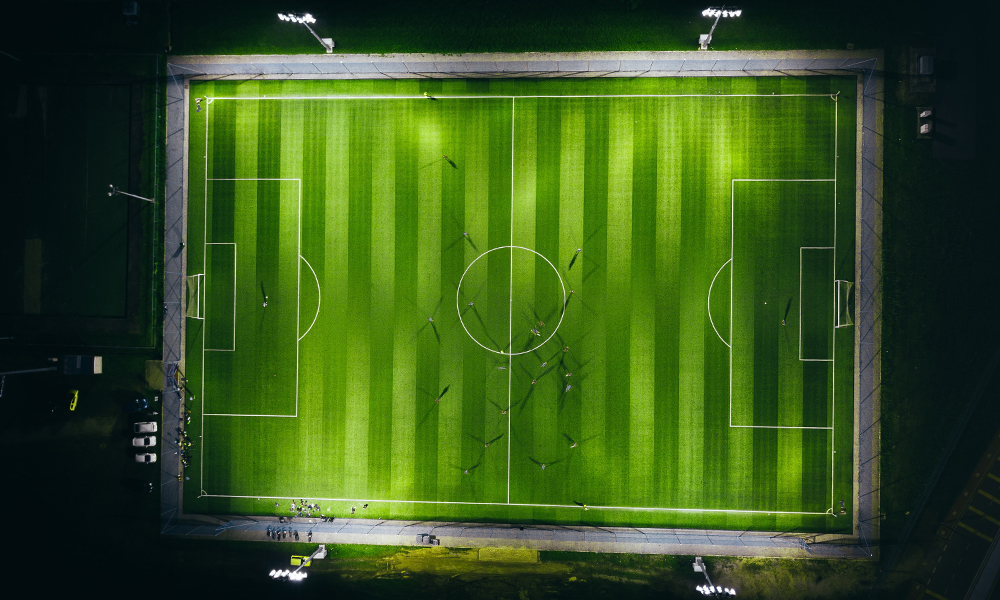
Tools and Materials
1. Turf Tape: Used to join multiple artificial turf sections, ensuring a strong, non-split seam.
2. Seam Fabric: Lay under the turf seams to increase adhesion and stability, preventing cracking after long-term use.
3. U-shaped Nails: Secure turf edges, seams, and corners to prevent displacement.
4. Quartz Sand: Fill between turf fibers to improve foot feel and elasticity, maintain fiber shape, and reduce wear.
5. Compactor: Compacts the ground and infill layer before and after installation, ensuring a level surface and preventing depressions later; choose an electric or manual model based on the area.
6. Specialized Cutting Tools: Precisely cut turf edges and irregularly shaped areas to ensure a snug fit.
7. Sand Spreader & Grass Brusher: The sand spreader evenly distributes quartz sand, and the brush straightens the grass fibers to prevent them from flattening after infill.
8. Rubber mallet: Used to fix U-shaped nails, compact the joints, and reduce damage to the straw.
Preparation Before Installation
Measure the site area: Accurately record the length and width, allowing for a 5-10cm allowance for wastage.
Confirm the ground type: Determine whether it is cement, asphalt, dirt, or gravel. Different ground types require different base treatment materials.
Ground flatness: Measure with a 2-meter straightedge; the height difference should be ≤3mm/㎡, with no obvious bumps, depressions, or cracks.
Clear obstacles: Remove stones, weeds, garbage, and other debris, ensuring the ground is free of sharp objects.
Confirm drainage conditions: The ground should have a 1%-2% slope (to prevent water accumulation), and the existing drainage system must be unobstructed.
How To Install Artificial Turf
1. Foundation Preparation and Drainage
• Thoroughly clear weeds, stones, trash, and other debris from the site, removing any sharp objects to prevent puncturing the lawn;
• Use a compactor to repeatedly roll the existing ground to ensure there is no significant settlement of the foundation.
• The ground should have a 1%-2% drainage slope, sloping towards the drainage outlet or the edge of the site to prevent water accumulation and subsequent lawn mold. If it is a soil foundation, geotextile fabric should be laid to prevent soil erosion.

2. Base Course Laying
Lay a layer of graded crushed stone, usually 5-10cm thick, and compact it again until there is no obvious indentation when stepped on, forming a solid and stable base course.
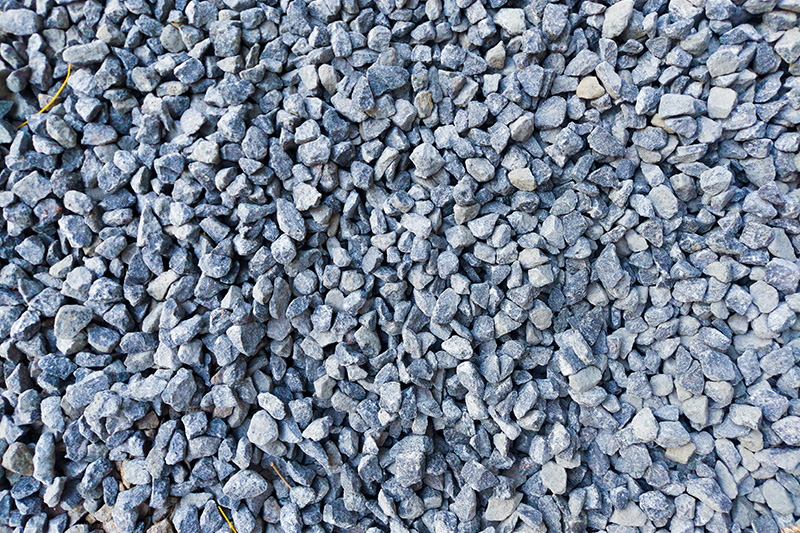
3. Landscape Fabric Installation
• The landscape fabric must be laid to cover the entire sub-base. Secure all overlaps with landscape staples, ensuring any drainage outlets remain clear and uncovered.
• The fabric helps to prevent the mixing of sub-base gravel with underlying soil, effectively suppresses weed growth, and maintains water permeability.
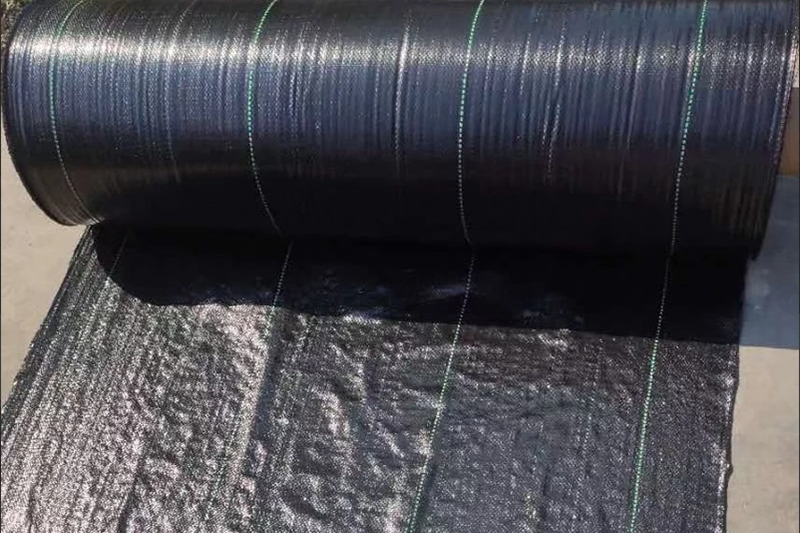
4. Artificial Turf Unrolling and Trimming
First, unroll the turf rolls sequentially and ensure all grass blades face the same direction. Second, leave a seam overlap, typically 3-5 centimeters. Finally, make precise cuts along the boundaries.
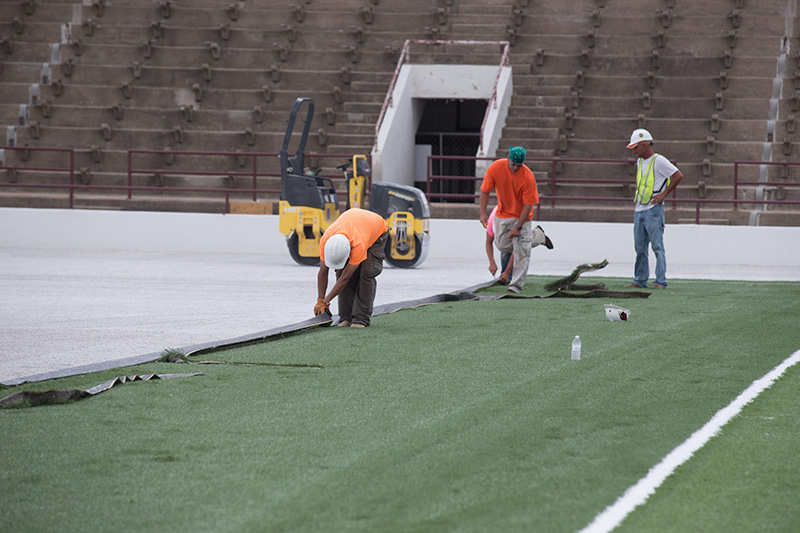
5. Seam Connection
• Lay the seaming tape flat under the joint of two turf pieces and align it centrally.
• Apply the special artificial turf adhesive evenly on the seaming tape.
• Lower, align and press the turf on both sides firmly to ensure a tight and seamless joint.
• Use heavy objects to compact the joint until the adhesive cures completely.
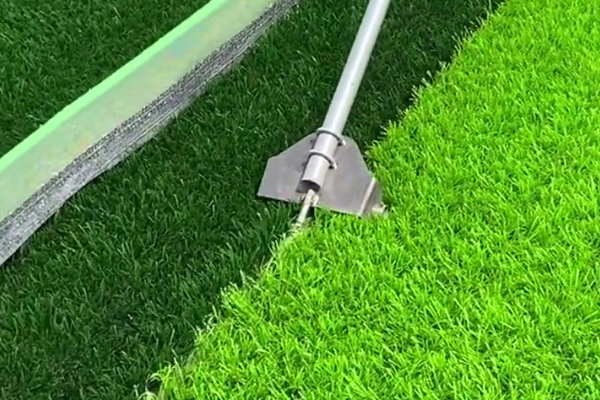
6. Perimeter Fixing and Edging
• Secure the turf along its perimeter using stainless steel or galvanized landscape staples, spaced at intervals of approximately 15-20 cm.
• For hard edges, an edging strip can be installed to create a clean and finished border.
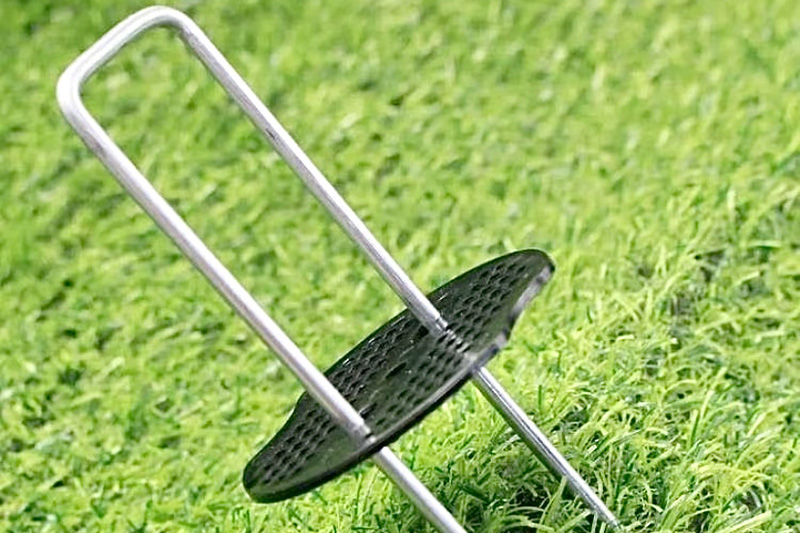
7. Infill Application
• Use a broadcast spreader to apply a uniform layer of dry silica sand or rubber granules evenly across the surface. The type of infill material should be selected based on the intended use of the field.
• After spreading, use a power broom or a specialized turf brush to groom the grass blades into an upright position. This process helps the infill settle down to the base of the turf fibers.
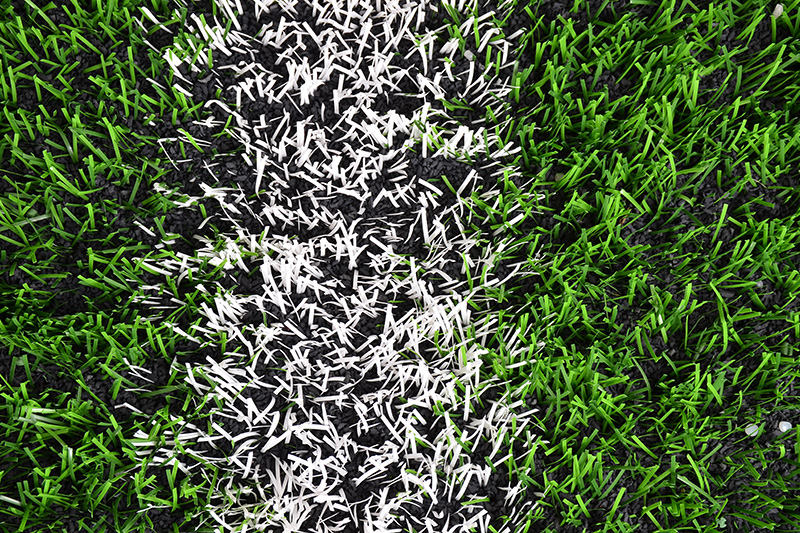
8. Final Grooming and Inspection
• Conduct a thorough inspection of surface leveling, seam connections, and perimeter fixing.
• Perform a final grooming to ensure the turf fibers stand upright and present a full, uniform appearance.
• Remove all construction debris from the site.
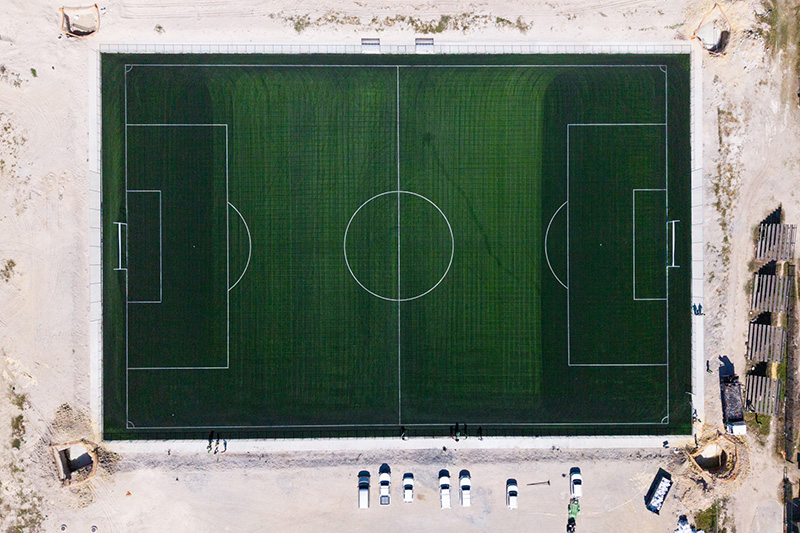
Installation Demonstration
What Are The Precautions for Installing Football Turf?
Make sure the selected turf meets national standards to ensure sports performance and safety.
(1) Regular maintenance, including cleaning up garbage, checking joints, and replenishing quartz sand and rubber particles when necessary.
(2) The installation process must be strictly in accordance with technical specifications to avoid problems such as uneven turf and poor drainage.
(3) Through the design and construction of a professional team, a high-performance football field can not only provide a good game experience, but also have high cost-effectiveness and long-term use value.
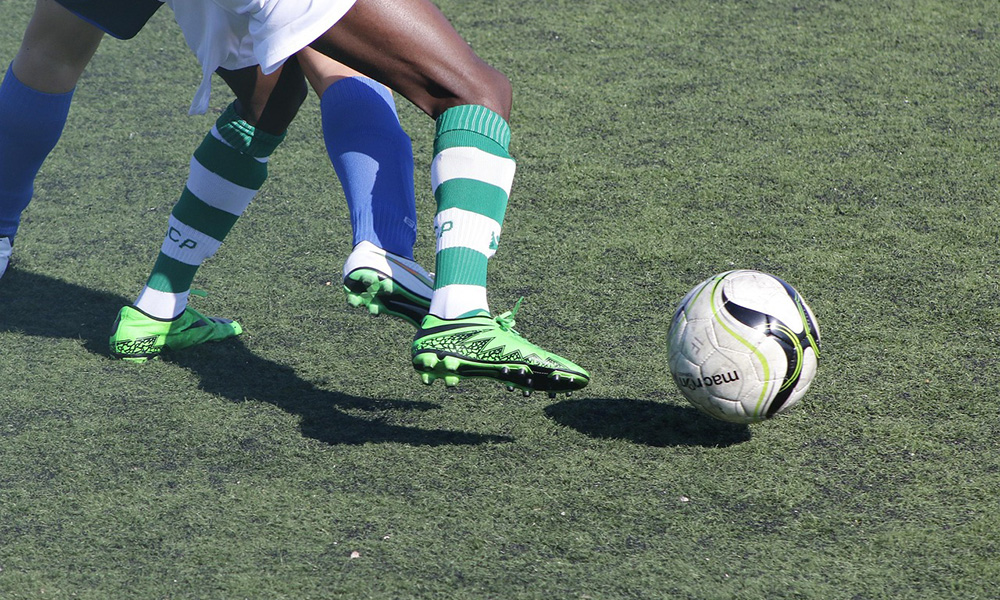
Factors Affecting The Cost of Installing Artificial Turf in Sports Fields
When planning the construction of a new artificial turf sports field, the following cost factors need to be considered:
1. Foundation Engineering
Soil Testing (Optional): Ensure foundation stability and load-bearing capacity through soil analysis.
Site Infrastructure Construction: Includes fencing, traffic safety facilities, and directional signage.
Drainage System: Excavate drainage ditches to prevent water accumulation on the site; a core requirement for outdoor venues.
Subgrade and Surrounding Foundation Treatment: Construction of the subgrade and reinforcement of surrounding areas to ensure structural integrity.
Pedestrian Walkway and Safety Zone Paving: Provide safe passageways for athletes and spectators, including boundary line and bonding layer construction.
2. Turf System
Cushioning Pads: Enhances athletic comfort and reduces the risk of injury.
Artificial Turf Installation: Turf installation, precise line marking, and sports-specific customization.
Infill Material: Most turf systems require infill material to maintain grass fiber shape and drainage; cost varies depending on material grade.
Functional Testing: Testing of particle distribution uniformity and permeability to ensure system durability.
3. Sports Equipment
Fence Installation: Secures the field boundaries, prevents equipment/balls from escaping, and protects personnel safety.
Fixed Sports Equipment: Installs essential equipment such as goals and nets according to the type of sport.
4. Cost of Value-Added Facilities
Costs depend on the intended use of the field, the sports activities required, and the materials chosen. Professional sports turf suppliers such as UNIGRASS typically offer one-stop services, including:
• LED sports lighting systems
• Field cooling sprinkler systems
• Protective fencing and barriers
• Sports equipment and turf maintenance tools (such as scrubbers and infill refill kits)
In addition, different turf fields for different sports will have different cost requirements, mainly depending on the size, shape, turf type and other additional requirements such as markings, equipment and safety areas.
Indoor turf field installation costs: The cost of indoor turf fields will vary depending on the size of the field, lack of drainage systems and the need for dedicated turf. Compared with outdoor fields, indoor fields are protected from weather factors, but unique infrastructure needs need to be considered.
Key Installation Considerations for Different Scenarios
Residential Gardens & Yards
Select turf with high realism, a soft texture, and excellent UV/fade resistance. Key considerations include a well-planned drainage system, seamless integration with the overall landscape design, and ensuring the product is child- and pet-friendly.

Commercial Spaces
Prioritize turf with high traffic tolerance and required fire-retardant ratings. Choose a product known for superior durability, stain resistance, and a high-end, neat appearance (with optional logo customization). During installation, emphasize moisture-proofing the sub-base, achieving aesthetically pleasing and durable edging, and ensuring adequate ventilation in indoor applications.
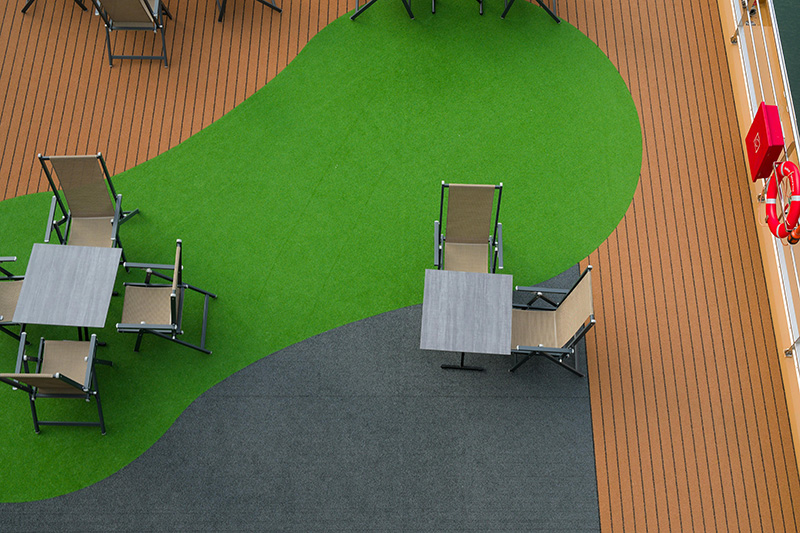
Sports Fields
The foundation must meet professional sports performance standards. Select turf with high elasticity and tear resistance to accommodate athletic movements. Incorporate a shock-absorbing underlay for impact protection. Installation must ensure the base achieves professional-grade levelness, features an enhanced drainage rate, and includes accurately marked sports lines that comply with relevant field standards.

Pet Areas
Opt for turf designed with a coarse, durable pile that resists digging and chewing, incorporates antimicrobial/odor-control technology, and has a smooth surface free of irritating debris. The sub-base must be highly permeable for easy cleaning and drainage. Special attention during installation should be given to creating strong, secure seams that prevent pets from pulling them apart.
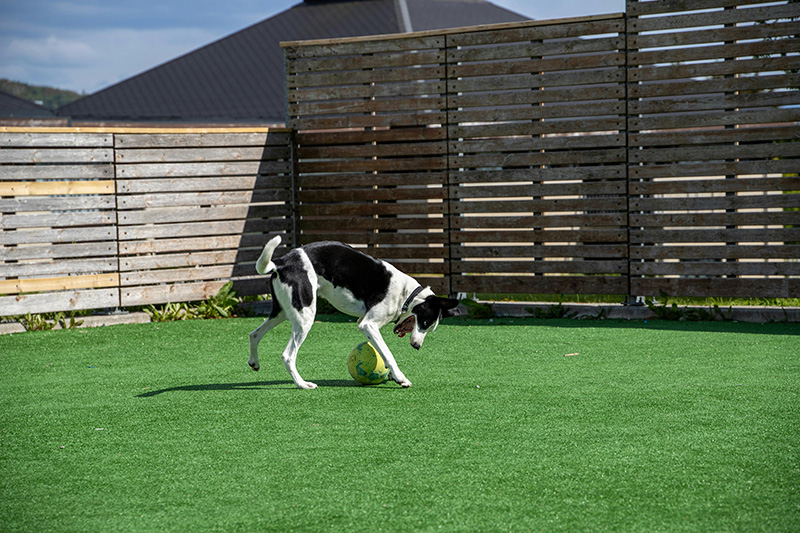
Golf Greens
For a professional putting experience, professional artificial turf for putting greens is essential. Choose turf with 6-10mm grass fibers and high density to ensure accurate ball speed and smooth roll. During installation, pay close attention to ensuring the base is extremely flat and use specially formulated silica sand for multiple rounds of fine filling and combing.
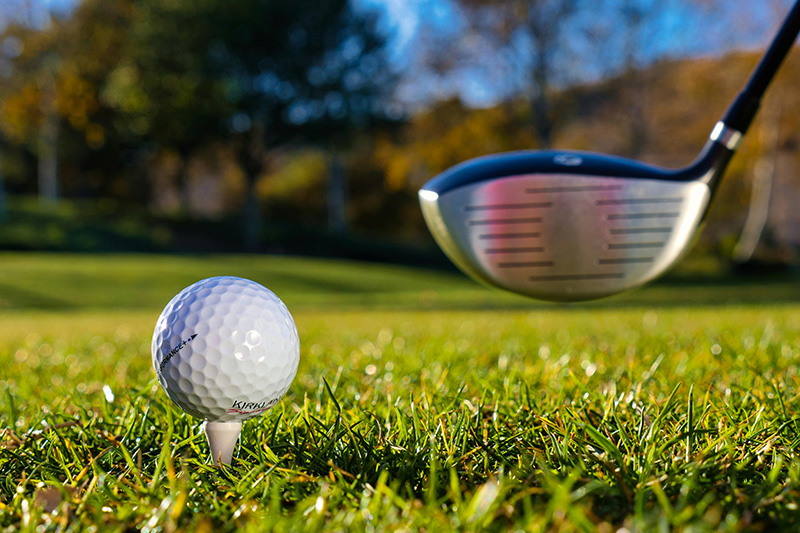
Artificial Turf Installation Cost
Artificial Turf Cost
The cost of installing artificial turf varies depending on several factors, but generally ranges from a few dollars to $20 per square foot. Generally, the average cost of installation is between $9 and $12 per square foot, and this price usually covers labor and materials. For example, for a small 500 square foot project, the installation cost is about $3,000 to $7,500. The total cost of artificial turf will vary depending on the quality of the turf selected, other materials used, the difficulty of installation, and the installer hired.
Artificial Turf Price Per Square Foot
For example, if the installation cost is $10 per square foot, the total cost of 1,000 square feet of turf would be $10,000 (including labor and materials). If the installation cost is $5 per square foot, the total cost would be $5,000; if the installation cost is $18 per square foot, the total cost would be $18,000.
In summary, while the size of the area is an important factor in the cost of installing artificial turf, the actual cost will also be affected by factors such as turf quality, installation complexity, and labor costs.
Professional Installation vs. DIY Installation
1. Durability
• Professional Installation: Features standardized base preparation and secure turf seaming, resulting in a service life of 10-15 years.
• DIY Installation: The base preparation is often non-standard, leading to issues like loosening, seam separation, and a higher rate of material degradation. The expected lifespan is typically only 3-5 years.
2. Aesthetic Appeal
• Professional Installation: Features precise cutting and seamless splicing of turf, resulting in high overall flatness and a visually harmonious and unified appearance.
• DIY Installation: Cutting tends to be imprecise, seams are not sufficiently concealed, thereby detracting from the overall visual appeal.
3. Drainage Performance
• Professional Installation: Incorporates a scientifically designed gradient and drainage structure tailored to the site, ensuring smooth drainage and preventing water accumulation.
• DIY Installation: Gradient and drainage design lack precision, leading to a higher risk of water retention, which can promote mold growth on the turf.
4. Safety
• Professional Installation: Utilizes eco-friendly backing materials that are odorless and formaldehyde-free, with edges securely anchored to eliminate tripping or scratching hazards.
• DIY Installation: May involve substandard materials and insufficient fixation, causing edges to lift easily and posing safety risks.
5. Warranty Service
• Professional Installation: Offers an official warranty lasting 1–5 years, with access to follow-up on-site maintenance services.
• DIY Installation: Lacks formal warranty protection, and any issues that arise must be repaired at the owner's own expense.
FAQ
1. What should I do if the seams are visible?
Ensure the turf sections are perfectly aligned and firmly pressed together during installation, using professional-grade adhesive for bonding. Additionally, apply an appropriate amount of silica sand or rubber granules as infill to help conceal the seam lines.
2. How much infill material is required?
The required amount of infill depends on the intended use of the turf and the pile height. For sports fields, the recommended quantity is approximately 15-25 kg per square meter. For decorative or leisure areas, approximately 5-10 kg per square meter is typically sufficient.
3. How can I resolve water pooling after rain?
Addressing drainage issues requires optimization from the initial installation phase. Select high-quality, permeable turf and construct a base layer using gravel combined with porous concrete, ensuring a 1%-2% slope for water runoff. For routine maintenance, promptly remove fallen leaves and debris to prevent clogging the drainage channels, ensuring efficient water infiltration and discharge.
Construction Process
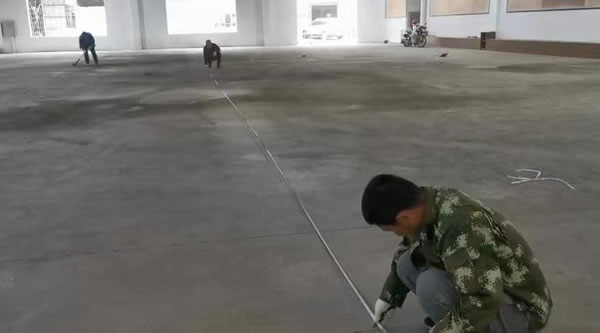
Messure
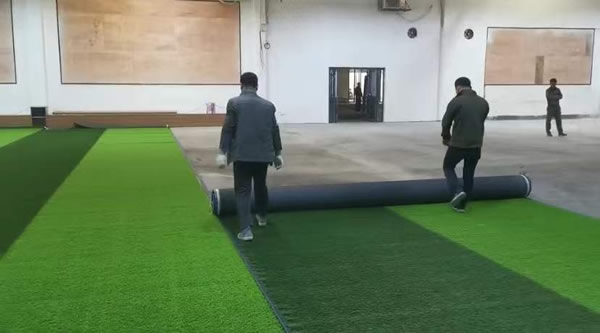
Paving the grass
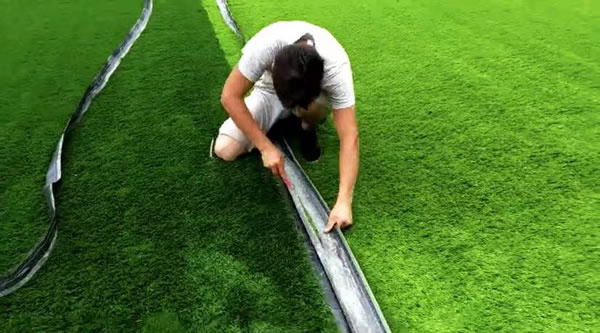
Cut the edge
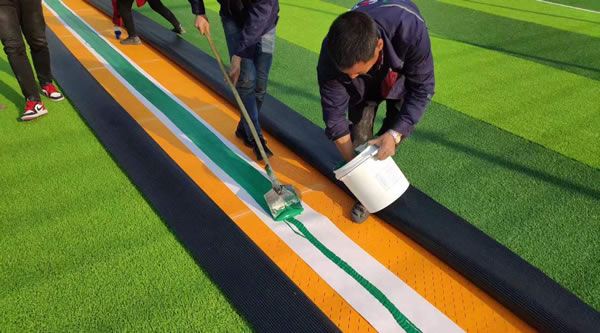
Brush Glue
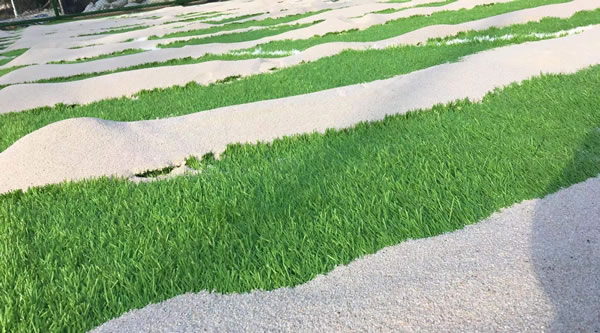
Infill sillica Sand
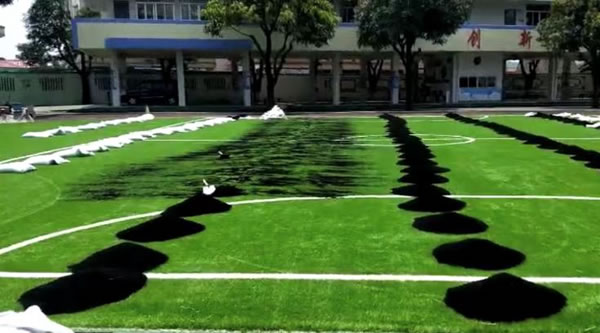
Infill SBR Rubber
